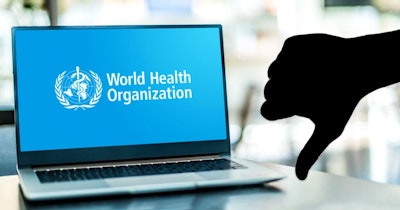An alternative, natural, holistic health system, aided by practitioners who don’t need an expensive high-tech infrastructure behind them or expensive patented drugs, would be far more egalitarian than the current system — and the general level of well-being would be far higher.
My wife Stella, who is an amazing healer, is facing the contention that bodywork and alternative medicines are elitist.
“Only those with disposable income can afford them, and predominantly white privileged women indulge in them.” I’ll respond to this concern as a specific illustration of the point of my recent piece, “Notes on Privilege.”
It is certainly true that our current system puts most non-mainstream healthcare options beyond the reach of the underprivileged. However, this is not the fault of the alternative therapies themselves. It is the fault of a system that makes them “alternative” in the first place.
Natural, alternative and holistic therapies are intrinsically cheaper and more accessible than high-tech medicine. But are they as effective?
For some acute conditions, they are not. But for the chronic conditions that afflict most Americans, they are more effective. That’s why people pay for them out-of-pocket, even when they can barely afford them.
“Show me your evidence!” “Prove they are more effective!” I could cite research, but would the skeptic read it? Research is systemically biased toward profitable therapies, but even so, a vast literature is available affording a glimpse into an alternative universe where our most intractable diseases are easily cured.
One compelling book comes to mind right now, “Ancient Secrets of a Master Healer: A Western Skeptic, An Eastern Master, And Life’s Greatest Secrets,” by Clint Rogers, about the legendary Vedic lineage-holder Dr. Naram. Even after 30 years in the alternative health universe, I was deeply affected by this book.
Some people argue that if alternatives really were so effective, they would be incorporated more fully into our healthcare system. Ironically, this argument affirms crucial assumptions of the edifice of privilege.
It assumes that the system of pharma-funded research, regulatory agencies and for-profit medical institutions is sound. It assumes that the authorities are trustworthy guardians of the public interest. It assumes that those practitioners and therapies that are left on the margins are there because they have less merit.
Think about all the races, cultures and people who have been left on the margins. Is that because a merit-based system has justly found them to be less worthy of inclusion?
Well, the same mechanisms that exclude whatever doesn’t serve power and profit operate in the world of health alternatives too.
Taking for granted the soundness of the existing system, health equity is simply a matter of improving access to that system. If, however, the existing system serves power and profit better than it serves people, we have to look sympathetically at what it excludes.
The realm of the alternative, natural and holistic has the potential to return medicine to the people.
It can re-empower people to take charge of their own health, aided by practitioners who don’t need an expensive high-tech infrastructure behind them or expensive patented drugs.
Such a system would be far more egalitarian than the current one, and the general level of well-being far higher.
Stella offers the following comment:
“In my decades of treating thousands of clients and teaching hundreds of students, I have learned that you don’t actually need highly specialized knowledge to access miracle-level healing. Anyone can learn it. This is why I began teaching Resonant Attention — to remind people how powerful their own hands and minds really are.
“What I teach is just one of many easily accessible modalities of energy medicine and healing touch. These new-and-ancient technologies are in reach for almost everybody and should be common knowledge, taught in grade schools. The fact that they’ve been marginalized and undervalued mirrors the treatment of the people for whom they are currently inaccessible.”
In other words, far from being accessories of privilege, these practices have the potential to erase an important aspect of privilege.
Certainly, someone working two jobs at minimum wage to support a family isn’t going to have time or money for hour-long healing sessions in a quiet room somewhere at $150 a pop. But why are people so economically desperate to begin with?
One reason is healthcare costs, which consume one-fifth of the U.S. gross domestic product. (It was about one-twentieth in 1960.)
These costs present a huge economic burden to individuals, organizations and government. One hundred million Americans are saddled with medical debt, which is involved in over half of all bankruptcies.
We could, and should, distribute these costs more fairly, but much of the cost is inherent in the high-tech modalities that dominate today.
It doesn’t help anyone, privileged or not, to offer false medicines, to uphold disempowering paradigms, or to apply expensive and complicated technologies when simple ones would do.
The transformation of our healthcare culture won’t happen by leaving it to the very institutions that profit from our chronic disease and disparity. Real equity comes from reclaiming our bodies, reskilling medicine and returning medicine to the people.
Originally published on Charles Eisenstein’s Substack page.
The views and opinions expressed in this article are those of the authors and do not necessarily reflect the views of Children's Health Defense.










